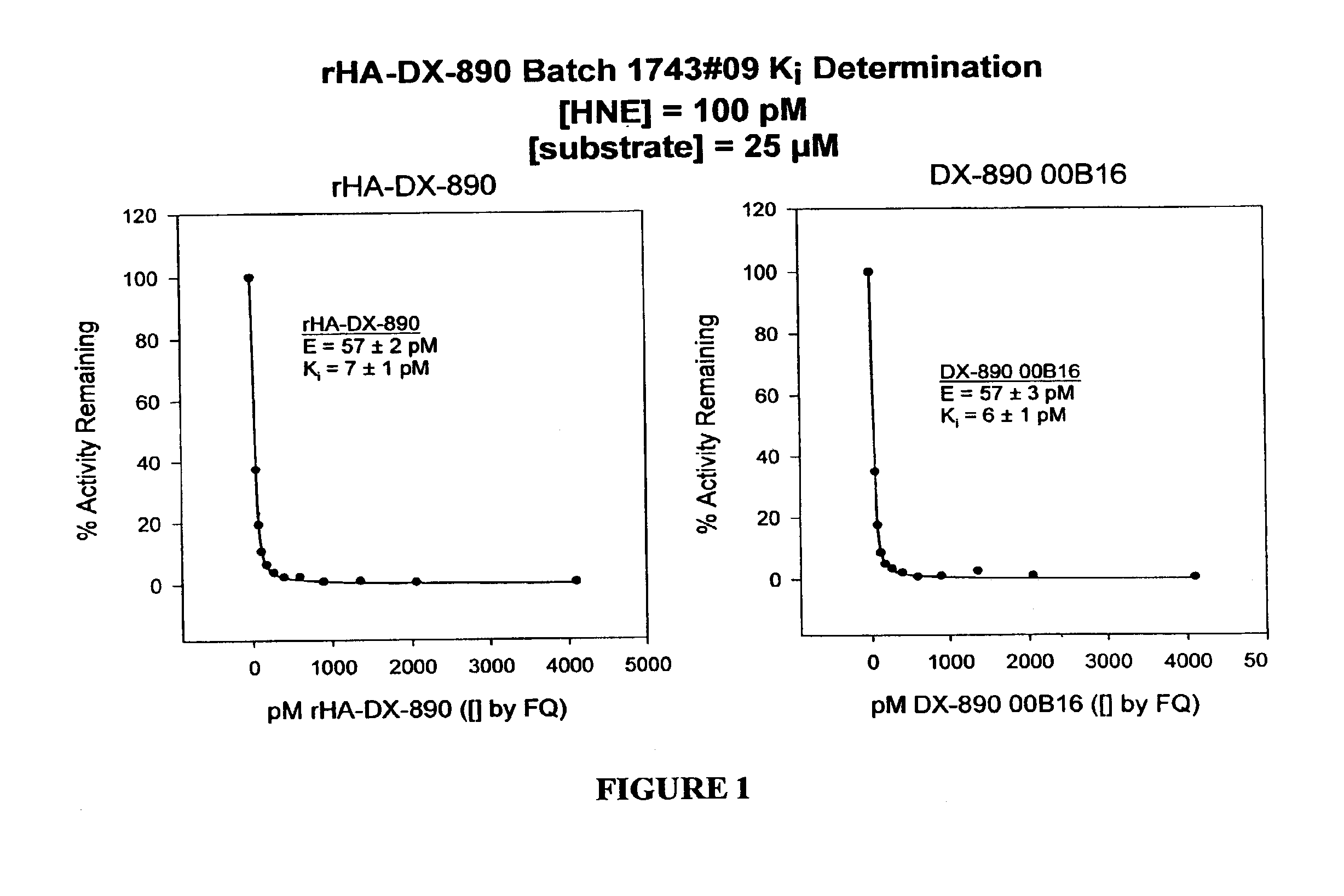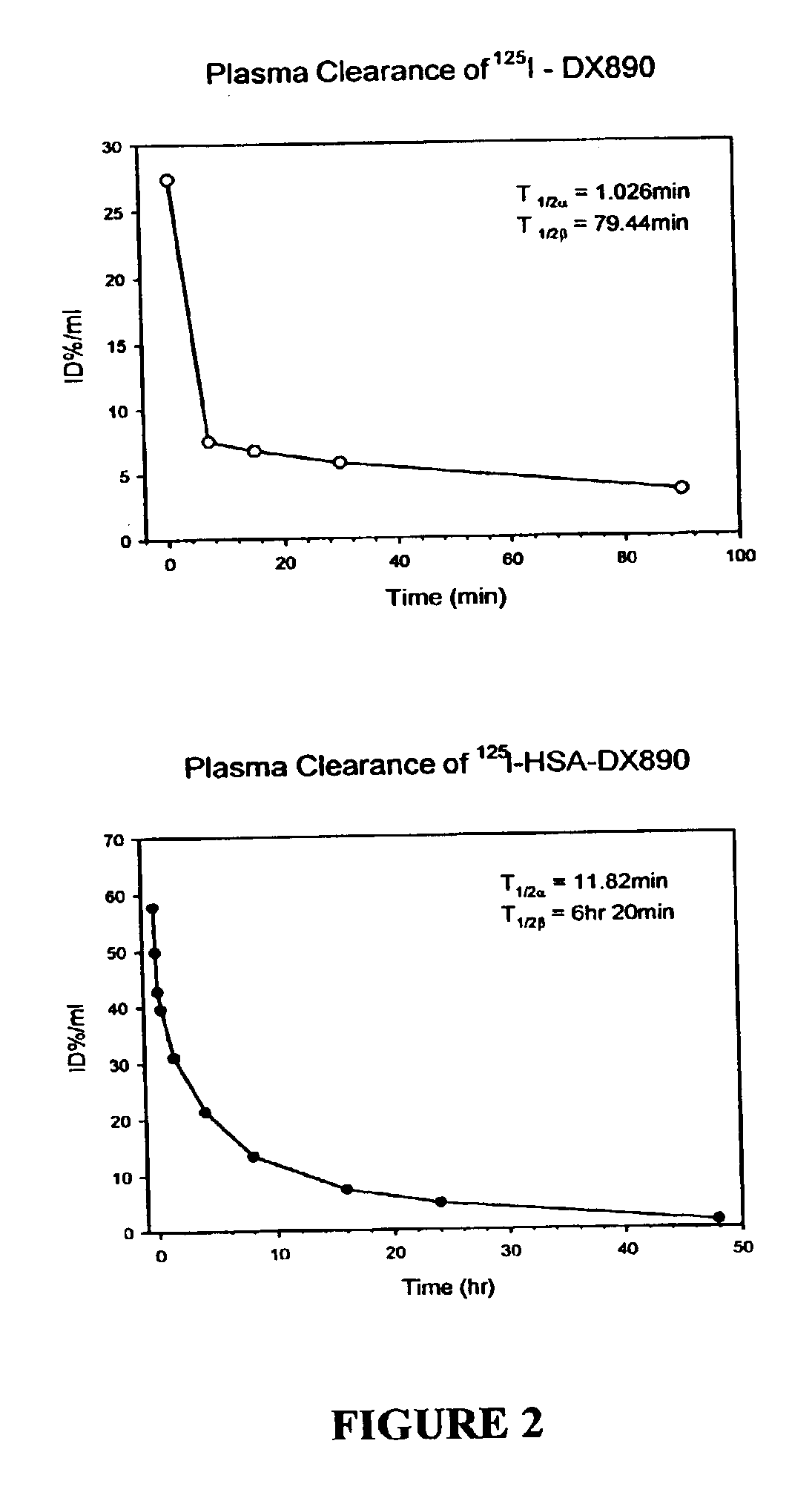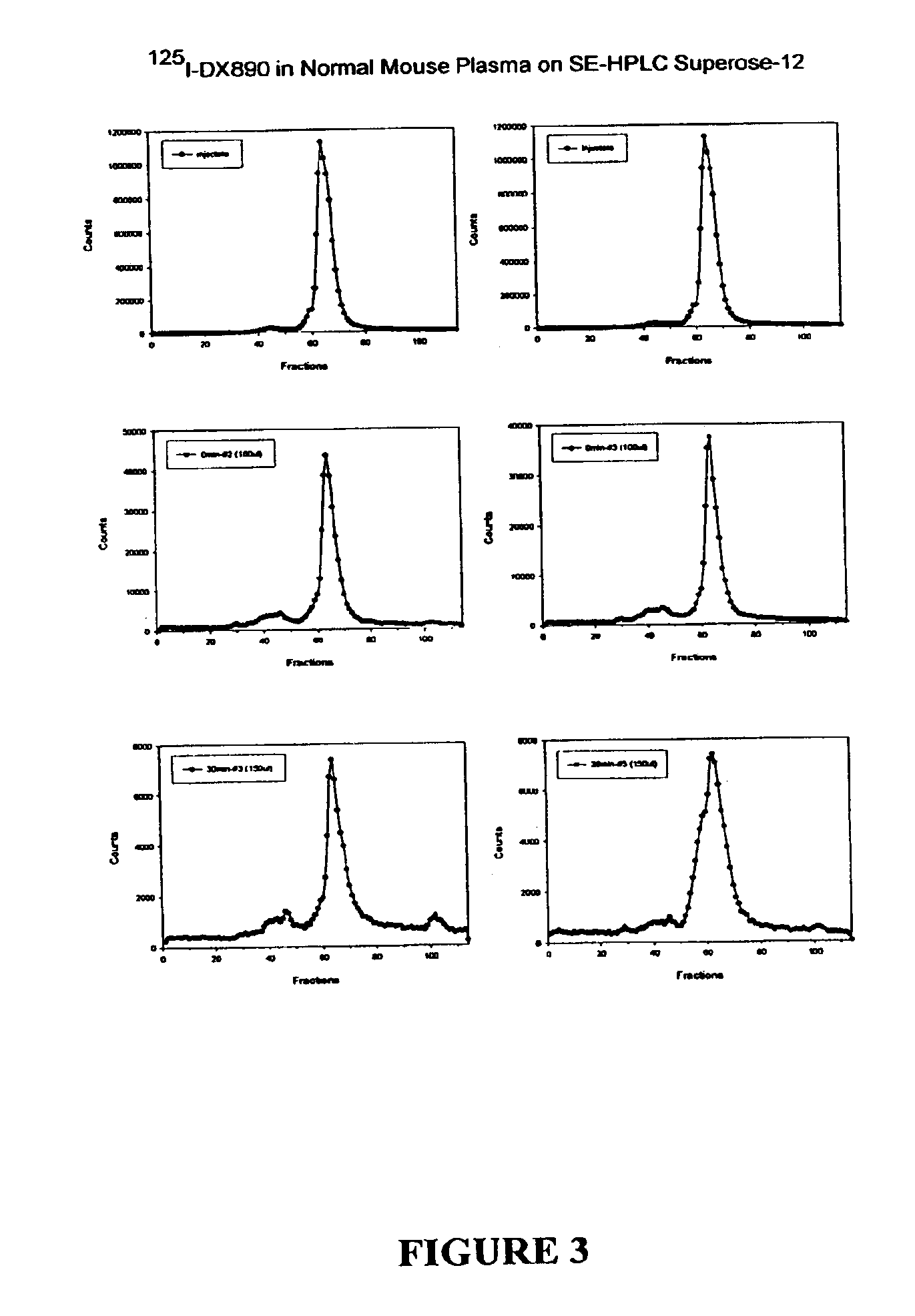Kunitz domain peptides
a domain and peptide technology, applied in the field of kunitz domain peptides and albumin fusion proteins, can solve the problems of high blood loss that cannot be resolved, high blood loss can resist immunological reaction and exposure to pathogens, and excessive bleeding is a serious safety issue, so as to prolong the half-life in vivo and/or the effect of prolonging or treating the activity in solution
- Summary
- Abstract
- Description
- Claims
- Application Information
AI Technical Summary
Benefits of technology
Problems solved by technology
Method used
Image
Examples
example 1
Construction of N-Terminal and C-Terminal Albumin-(GGS)4GG Linker Cloning Vectors
[0231]The recombinant albumin expression vectors pDB2243 and pDB2244 have been described previously in patent application WO 00 / 44772. The recombinant albumin expression vectors pAYE645 and pAYE646 have been described previously in UK patent application 0217033.0. Plasmid pDB2243 was modified to introduce a DNA sequence encoding the 14 amino acid polypeptide linker N-GGSGGSGGSGGSGG-C ((GGS)4GG, “N” and “C” denote the orientation of the polypeptide sequence) (SEQ ID No.: 28) at the C-terminal end of the albumin polypeptide in such a way to subsequently enable another polypeptide chain to be inserted C-terminal to the (GGS)4GG linker to produce a C-terminal albumin fusion in the general configuration, albumin-(GGS)4GG-polypeptide. Similarly, plasmid pAYE645 was modified to introduce a DNA sequence encoding the (GGS)4GG polypeptide linker at the N-terminal end of the albumin polypeptide in such a way to su...
example 2
Equilibrium Inhibition Constant for Unfused DPI-14
[0241]The amino acid sequence of DPI-14 is EAVREVCSEQAETGPCIAFFPRWYFDVTEGKCAPFFYGGCGGNRNNFDTEEYCMAVCGSA (SEQ ID No.: 39). A DNA sequence was derived from this polypeptide sequence by the process of back-translation. The DPI-14 was expressed in Pichia and extracted from the fermentation broth supernatant using ion-exchange chromatography, hydrophobic interaction chromatography, and ultrafiltration. The equilibrium inhibition constant (Ki) for DPI-14 inhibition of human neutrophil elastase (HNE) was determined to be 15±2 pM, for [HNE]=57±7 pM. The Ki measurement was performed using the methods set forth in Example 15.
example 3
A Construction of N-Terminal and C-Terminal Albumin-DPI-14 Fusions
[0242]The DNA sequences were provided at the 5′ or 3′ end to encode bridging sequences between the DPI-14 coding region, the albumin coding region or the leader sequence as appropriate for N-terminal DPI-14-(GGS)4GG-albumin or C-terminal albumin-(GGS)4GG-DPI-14 fusions. An N-terminal BglII-BamHI DPI-14 cDNA (Table 5) and a C-terminal BamHI-HindIII DPI-14 cDNA (Table 6) were constructed from overlapping oligonucleotides.
PUM
| Property | Measurement | Unit |
|---|---|---|
| length | aaaaa | aaaaa |
| disorder | aaaaa | aaaaa |
| vascular permeability | aaaaa | aaaaa |
Abstract
Description
Claims
Application Information
 Login to View More
Login to View More - R&D
- Intellectual Property
- Life Sciences
- Materials
- Tech Scout
- Unparalleled Data Quality
- Higher Quality Content
- 60% Fewer Hallucinations
Browse by: Latest US Patents, China's latest patents, Technical Efficacy Thesaurus, Application Domain, Technology Topic, Popular Technical Reports.
© 2025 PatSnap. All rights reserved.Legal|Privacy policy|Modern Slavery Act Transparency Statement|Sitemap|About US| Contact US: help@patsnap.com



